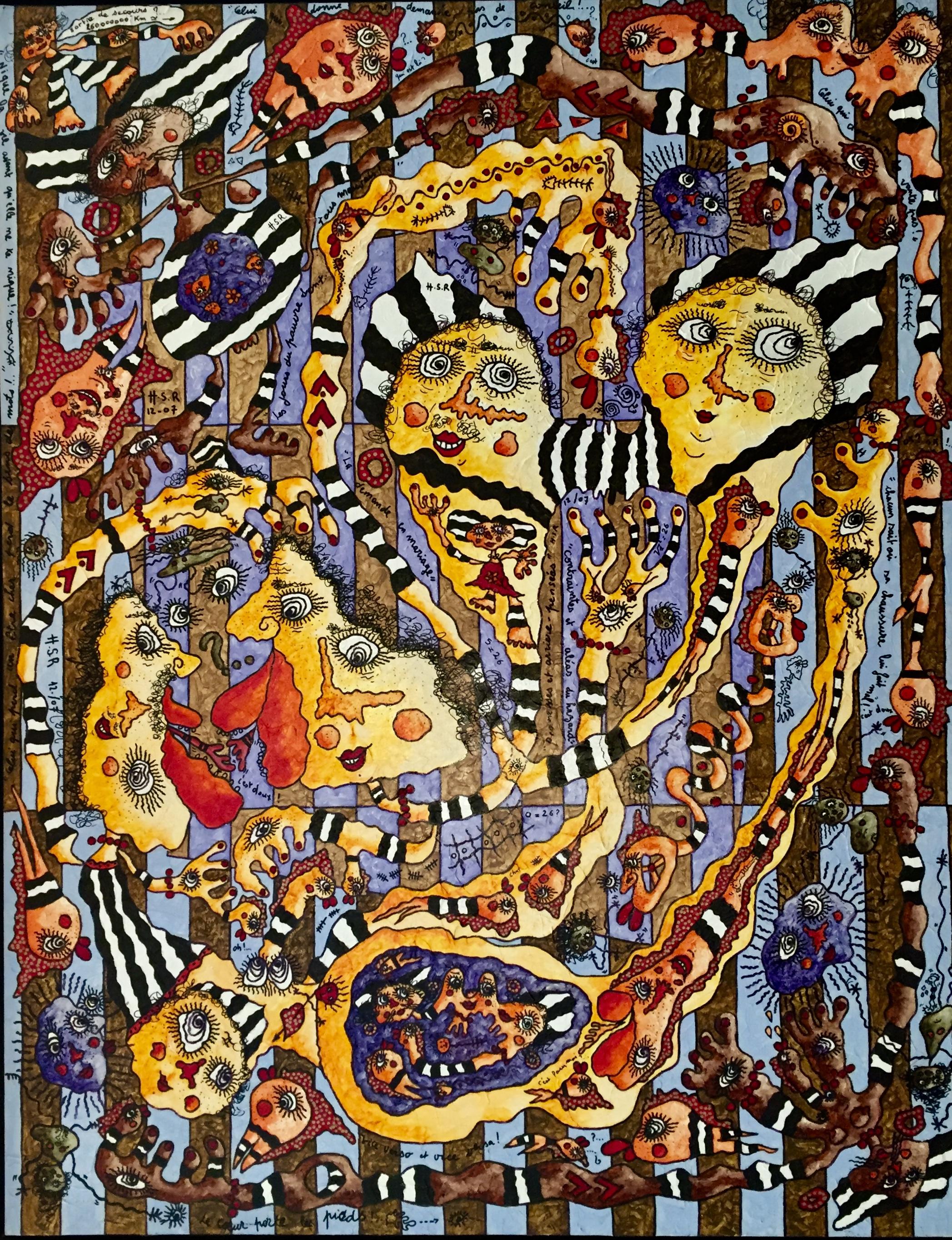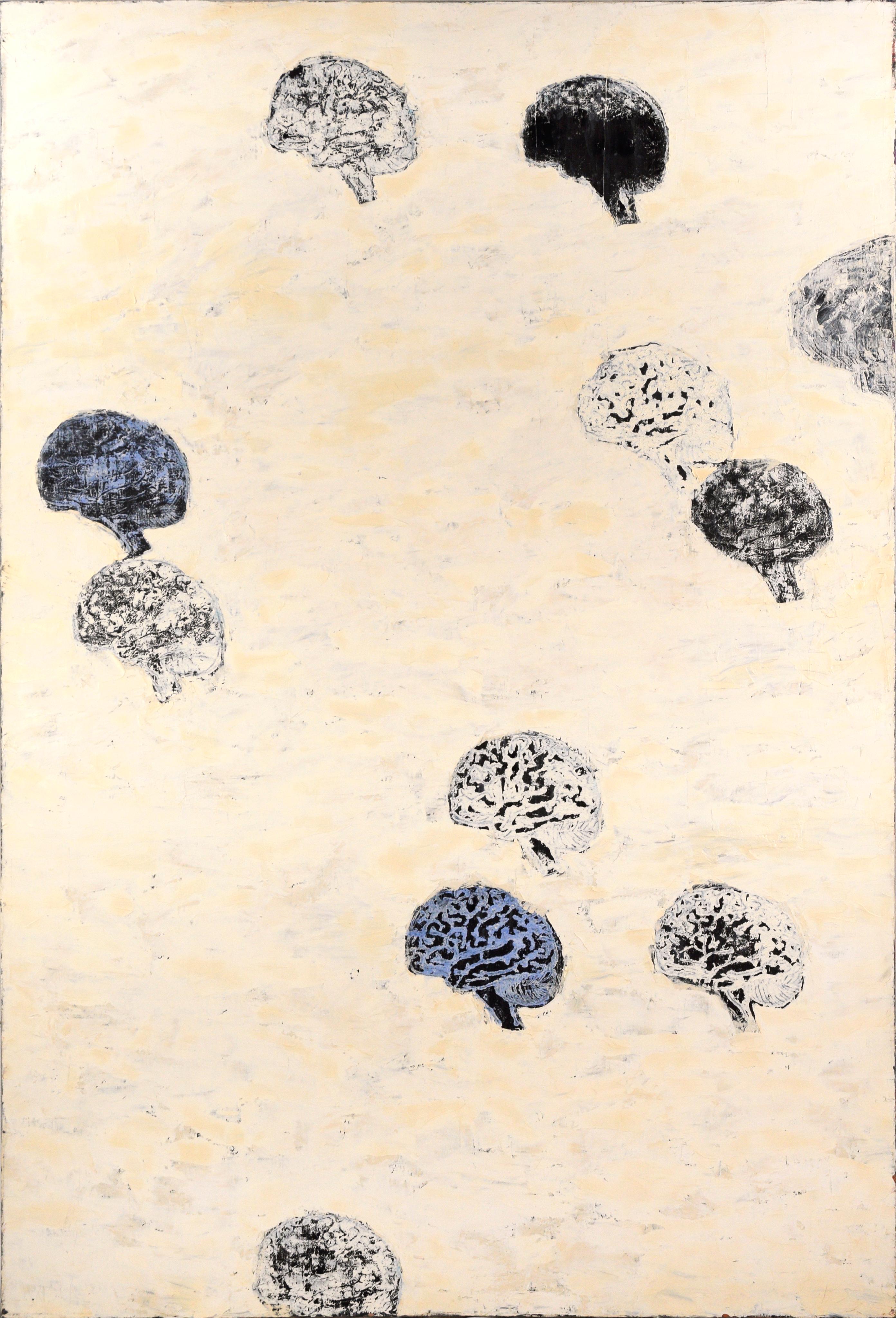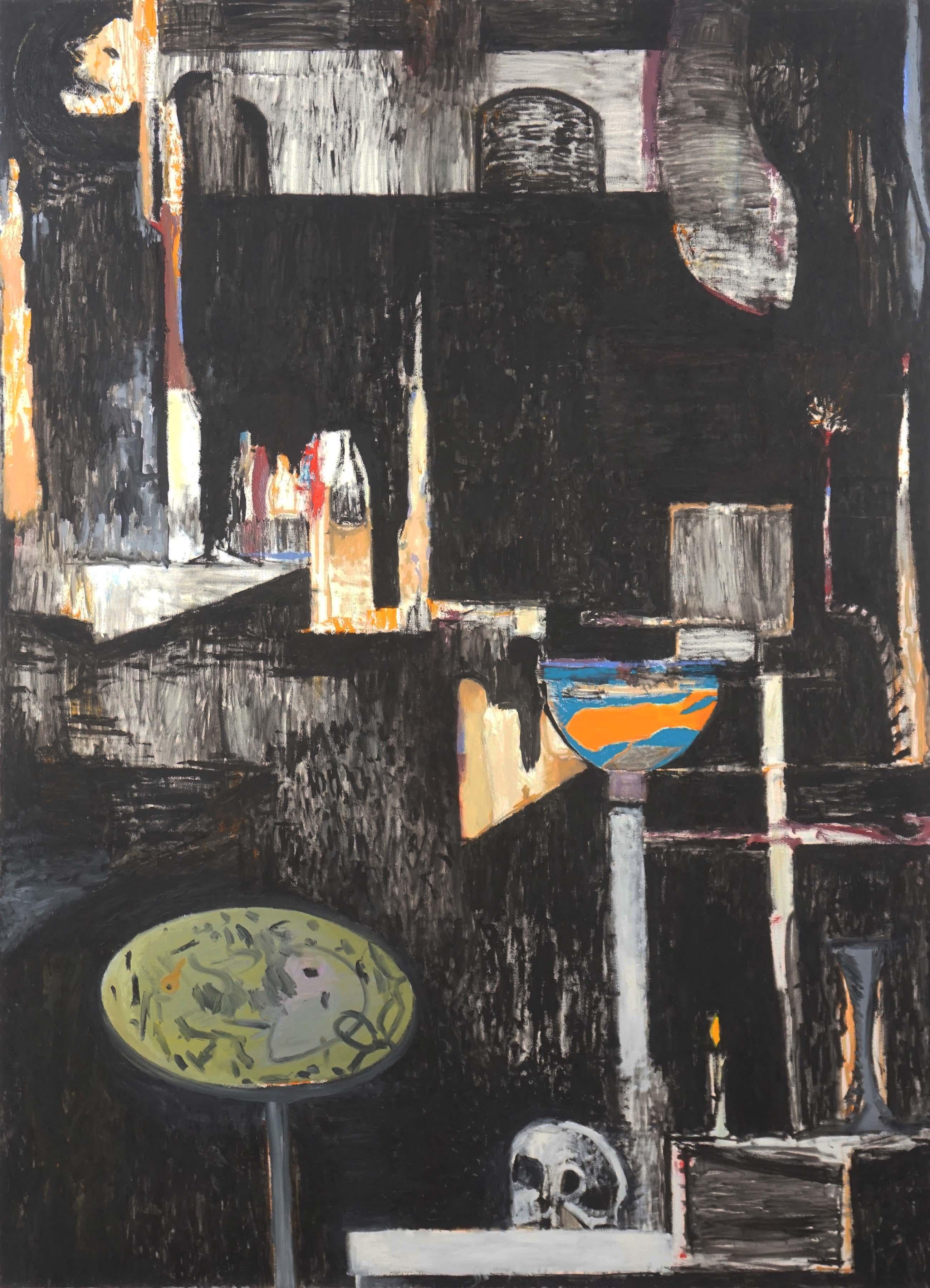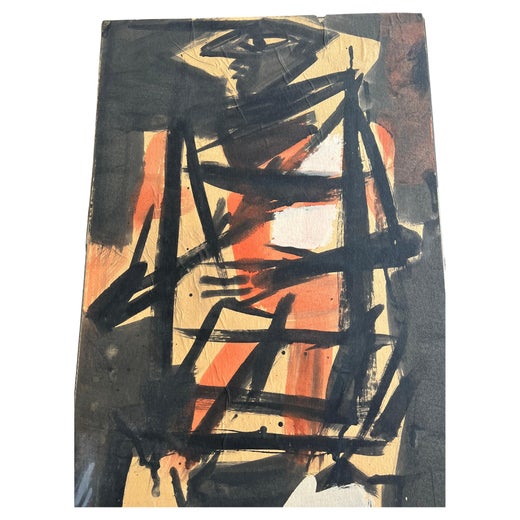Vaclav Vytlacil"Manhattan Night Life"c. 1932
c. 1932
About the Item
- Creator:Vaclav Vytlacil (1892-1984, American)
- Creation Year:c. 1932
- Dimensions:Height: 36 in (91.44 cm)Width: 47 in (119.38 cm)Depth: 3 in (7.62 cm)
- More Editions & Sizes:Framed Size 37" x 47"Price: $156,250
- Medium:
- Movement & Style:
- Period:
- Condition:
- Gallery Location:Lambertville, NJ
- Reference Number:
Vaclav Vytlacil
Born in 1892, Vaclav Vytlacil was a highly educated and gifted artist, early at the School of the Art Institute of Chicago, and later at the Art Students League. In the 1920s, his travels to Europe and studies of the old masters helped him gain artistic perspective and knowledge. At the Royal Academy of Art in Munich, Vytlacil met and befriended Hans Hofmann, becoming his teaching assistant. After returning to the US in 1928, Vytlacil became a member of the Art Students League faculty and successfully persuaded Hofmann to teach at the League as well. In 1936, he became a co-founder of the American Abstract Artists group and taught at Queens College in New York; the College of Arts and Crafts in Oakland, California; Black Mountain College in North Carolina; and the Art Students League. Vytlacil was honored with solo shows at The Carnegie Institute, Montclair Art Museum, the Phillips Memorial Gallery, the Krasner Gallery, University of Notre Dame, Rochester Art Gallery and others.
- ShippingRetrieving quote...Ships From: Lambertville, NJ
- Return PolicyThis item cannot be returned.
- “Woman in Black”By Vaclav VytlacilLocated in Lambertville, NJJim’s of Lambertville is proud to offer this artwork by: Vaclav Vytlacil (1892-1984) He was born to Czechoslovakian parents in 1892 in New York City. Living in Chicago as a youth, he took classes at the School of the Art Institute of Chicago, returning to New York when he was 20. From 1913 to 1916, he enjoyed a scholarship from the Art Students League, and worked with John C. Johansen (a portraitist whose expressive style resembled that of John Singer Sargent), and Anders Zorn. He accepted a teaching position at the Minneapolis School of Art in 1916, remaining there until 1921. This enabled him to travel to Europe to study Cézanne’s paintings and works of the Old Masters. He traveled to Paris, Prague, Dresden, Berlin, and Munich seeking the works of Titian, Cranach, Rembrandt, Veronese, and Holbein, which gave him new perspective. Vytlacil studied at the Royal Academy of Art in Munich, settling there in 1921. Fellow students were Ernest Thurn and Worth Ryder, who introduced him to famous abstractionist Hans Hofmann. He worked with Hofmann from about 1922 to 1926, as a student and teaching assistant. During the summer of 1928, after returning to the United States, Vytlacil gave lectures at the University of California, Berkeley, on modern European art. Soon thereafter, he became a member of the Art Students League faculty. After one year, he returned to Europe and successfully persuaded Hofmann to teach at the League as well. He spent about six years in Europe, studying the works of Matisse, Picasso, and Dufy. In 1935, he returned to New York and became a co-founder of the American Abstract Artists group in 1936. He later had teaching posts at Queens College in New York; the College of Arts and Crafts in Oakland, California; Black Mountain College in North Carolina; and the Art Students League. His paintings exhibit a clear inclination toward modernism. His still lives and interiors from the 1920s indicate an understanding of the art of Cézanne. In the 1930s, his works displayed two very different kinds of art at the same time. His cityscapes and landscapes combine Cubist-inspired spatial concerns with an expressionistic approach to line and color. Vytlacil also used old wood, metal, cork, and string in constructions, influenced by his friend and former student, Rupert Turnbull. He eventually ceased creating constructions as he considered them too limiting. The spatial challenges of painting were still his preference. During the 1940s and 1950s, his works indicated a sense of spontaneity not felt in his earlier work. He married Elizabeth Foster in Florence, Italy, in 1927 and they lived and worked in Positano, Italy for extended periods of time. Later on, they divided their time between homes in Sparkill, New York and Chilmark, Massachusetts, where Vyt, as he was affectionately called, taught at the Martha's Vineyard Art...Category
1960s Abstract Expressionist Figurative Paintings
MaterialsOil, Board
- "After Work"By Vaclav VytlacilLocated in Lambertville, NJJim’s of Lambertville is proud to offer this artwork. Signed lower right Vaclav Vytlacil (1892-1984) He was born to Czechoslovakian parents in 1892 in New York City. Living in C...Category
20th Century Abstract Expressionist Abstract Paintings
MaterialsOil, Board
- "Seriously!"By James LechayLocated in Lambertville, NJSigned lower right Jim’s of Lambertville is proud to offer this artwork by: Rex Ashlock (1918 – 1999) Born in Spokane, Washington in 1918 Rex Ashlock was known for his abstract, f...Category
20th Century Abstract Abstract Paintings
MaterialsCanvas, Oil
- "The Evening Crowd, Manhattan"By Vaclav VytlacilLocated in Lambertville, NJJim’s of Lambertville is proud to offer this artwork by: Vaclav Vytlacil (1892-1984) He was born to Czechoslovakian parents in 1892 in New York City. Living in Chicago as a youth, he took classes at the School of the Art Institute of Chicago, returning to New York when he was 20. From 1913 to 1916, he enjoyed a scholarship from the Art Students League, and worked with John C. Johansen (a portraitist whose expressive style resembled that of John Singer Sargent), and Anders Zorn. He accepted a teaching position at the Minneapolis School of Art in 1916, remaining there until 1921. This enabled him to travel to Europe to study Cézanne’s paintings and works of the Old Masters. He traveled to Paris, Prague, Dresden, Berlin, and Munich seeking the works of Titian, Cranach, Rembrandt, Veronese, and Holbein, which gave him new perspective. Vytlacil studied at the Royal Academy of Art in Munich, settling there in 1921. Fellow students were Ernest Thurn and Worth Ryder, who introduced him to famous abstractionist Hans Hofmann. He worked with Hofmann from about 1922 to 1926, as a student and teaching assistant. During the summer of 1928, after returning to the United States, Vytlacil gave lectures at the University of California, Berkeley, on modern European art. Soon thereafter, he became a member of the Art Students League faculty. After one year, he returned to Europe and successfully persuaded Hofmann to teach at the League as well. He spent about six years in Europe, studying the works of Matisse, Picasso, and Dufy. In 1935, he returned to New York and became a co-founder of the American Abstract Artists group in 1936. He later had teaching posts at Queens College in New York; the College of Arts and Crafts in Oakland, California; Black Mountain College in North Carolina; and the Art Students League. His paintings exhibit a clear inclination toward modernism. His still lives and interiors from the 1920s indicate an understanding of the art of Cézanne. In the 1930s, his works displayed two very different kinds of art at the same time. His cityscapes and landscapes combine Cubist-inspired spatial concerns with an expressionistic approach to line and color. Vytlacil also used old wood, metal, cork, and string in constructions, influenced by his friend and former student, Rupert Turnbull. He eventually ceased creating constructions as he considered them too limiting. The spatial challenges of painting were still his preference. During the 1940s and 1950s, his works indicated a sense of spontaneity not felt in his earlier work. He married Elizabeth Foster in Florence, Italy, in 1927 and they lived and worked in Positano, Italy for extended periods of time. Later on, they divided their time between homes in Sparkill, New York and Chilmark, Massachusetts, where Vyt, as he was affectionately called, taught at the Martha's Vineyard Art...Category
1930s Abstract Abstract Paintings
MaterialsCanvas, Oil
- “Woman on the Rocks”By Josef ZenkLocated in Lambertville, NJJim’s of Lambertville is proud to offer this artwork by: Josef Zenk (1904-2000) Josef Zenk was born in New York City in 1904. After graduating from high school, he studied for thre...Category
20th Century Abstract Figurative Paintings
MaterialsOil, Board
- "Roman Bath" Series (2/3)By Vaclav VytlacilLocated in Lambertville, NJJim’s of Lambertville is proud to offer this artwork by: Vaclav Vytlacil (1892-1984) He was born to Czechoslovakian parents in 1892 in New York City. Living in Chicago as a youth, he took classes at the School of the Art Institute of Chicago, returning to New York when he was 20. From 1913 to 1916, he enjoyed a scholarship from the Art Students League, and worked with John C. Johansen (a portraitist whose expressive style resembled that of John Singer Sargent), and Anders Zorn. He accepted a teaching position at the Minneapolis School of Art in 1916, remaining there until 1921. This enabled him to travel to Europe to study Cézanne’s paintings and works of the Old Masters. He traveled to Paris, Prague, Dresden, Berlin, and Munich seeking the works of Titian, Cranach, Rembrandt, Veronese, and Holbein, which gave him new perspective. Vytlacil studied at the Royal Academy of Art in Munich, settling there in 1921. Fellow students were Ernest Thurn and Worth Ryder, who introduced him to famous abstractionist Hans Hofmann. He worked with Hofmann from about 1922 to 1926, as a student and teaching assistant. During the summer of 1928, after returning to the United States, Vytlacil gave lectures at the University of California, Berkeley, on modern European art. Soon thereafter, he became a member of the Art Students League faculty. After one year, he returned to Europe and successfully persuaded Hofmann to teach at the League as well. He spent about six years in Europe, studying the works of Matisse, Picasso, and Dufy. In 1935, he returned to New York and became a co-founder of the American Abstract Artists group in 1936. He later had teaching posts at Queens College in New York; the College of Arts and Crafts in Oakland, California; Black Mountain College in North Carolina; and the Art Students League. His paintings exhibit a clear inclination toward modernism. His still lives and interiors from the 1920s indicate an understanding of the art of Cézanne. In the 1930s, his works displayed two very different kinds of art at the same time. His cityscapes and landscapes combine Cubist-inspired spatial concerns with an expressionistic approach to line and color. Vytlacil also used old wood, metal, cork, and string in constructions, influenced by his friend and former student, Rupert Turnbull. He eventually ceased creating constructions as he considered them too limiting. The spatial challenges of painting were still his preference. During the 1940s and 1950s, his works indicated a sense of spontaneity not felt in his earlier work. He married Elizabeth Foster in Florence, Italy, in 1927 and they lived and worked in Positano, Italy for extended periods of time. Later on, they divided their time between homes in Sparkill, New York and Chilmark, Massachusetts, where Vyt, as he was affectionately called, taught at the Martha's Vineyard Art...Category
20th Century Abstract Impressionist Abstract Paintings
MaterialsOil, Board
- The Marriage Proposal - Abstract Painting Yellow Black White Brown Blue GreyBy Simon Richard HalimiLocated in Sofia, BG"The Marriage Proposal " is an abstract style painting by the French artist Maestro Simon Richard Halimi. Through his art, he has a very sharp and unique style of bright and colorful...Category
2010s Abstract Expressionist Abstract Paintings
MaterialsMixed Media, Canvas, Oil, Acrylic
- Modern Abstract Female Figure Statement 1990s Portrait Painting Large SignedBy Matthew SchaeferLocated in Milwaukee, WI"Abstract Woman" is an original oil painting by Matthew Schaefer. It depicts a woman in bright shapes and lines instead of solid form and naturalism. Matthew Schaefer's painterly sty...Category
1990s Abstract Expressionist Figurative Paintings
MaterialsCanvas, Oil
- Brainiac II AbstractBy Michael PaukerLocated in Soquel, CALarge-scale abstract of multicolor brains by Bay Area artist Michael Pauker (American, b.1957). Unsigned, but was acquired with a collection of his work. Unframed. Image size: 60"H x...Category
21st Century and Contemporary Abstract Expressionist Abstract Paintings
MaterialsCanvas, Oil
- Brainiac III Abstract, Large-Scale Vertical Abstract in Neutrals, Black & WhiteBy Michael PaukerLocated in Soquel, CALarge-scale vertical abstract of brains in a neutral color palette of black & white by Bay Area artist Michael Pauker (American, b.1957). Unsigned, but was acquired with a collection...Category
21st Century and Contemporary Abstract Expressionist Abstract Paintings
MaterialsCanvas, Acrylic, Oil
- Brainiac 1 AbstractBy Michael PaukerLocated in Soquel, CALarge-scale abstract of brains by Bay Area artist Michael Pauker (American, b.1957). Unsigned, but was acquired with a collection of his work. Unframed. Image size: 60"H x 70"W. No...Category
21st Century and Contemporary Abstract Expressionist Abstract Paintings
MaterialsCanvas, Oil
- Abstracted Vanitas with Goldfish and SkullBy Michael PaukerLocated in Soquel, CALarge-scale abstracted vanitas with goldfish, table, candle and skull by Bay Area artist Michael Pauker (American, b.1957). Unsigned, but was acquired with a collection of his work....Category
21st Century and Contemporary Abstract Expressionist Figurative Paintings
MaterialsAcrylic, Oil, Canvas






